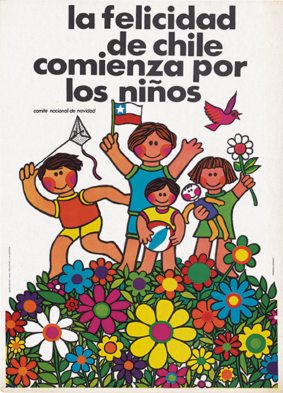Designing for a Better Tomorrow
By Olivia Preston
The basis for any design is its ability to solve a problem. Design is in every part of our lives, with solutions being created for our everyday problem. The fresh young talents of today combine yin – long-standing concepts with yang – forward-thinking and sustainability, to create new and inventive products.
For the seventh year running, design experts and creative, industrial pioneers have come together for the Lexus Design Award, an annual prize that showcases innovative products. Fresh, young creators are judged by experienced experts in a competition that celebrates design in all its forms, from fashion to interior design and engineering.
Finalists have looked at age-old designs and have moved products forward with original concepts – eco-friendly materials, impressive functionality and the embodiment of Lexus’ three fundamental principles, ‘anticipate, innovate, captivate’.
This year, six finalists were selected from thousands of entrants. 2020 has seen more progressive creations than before, with an even stronger focus on products’ environmental impact on the planet. Those judging the products are a generation driven by product interaction and interface, the up-and-coming designers do the same but instead ask themselves: “How can we make this greener?”
Biodegradable materials were incorporated into the designs, as was the use renewable energy sources, helping to reduce the carbon footprint of Lexus.
The Finalists
Ranging from personal washing products to accessible sewing machines, the inventive solutions created by Lexus’ finalists highlights the creative interplay between design and technology.

Bio.Scales
The Problem: Urban living increases pollution concentration
Solution: Compostable air filters
With more than half of the world’s population living in urban environments, the air quality in these areas is decreasing and pollution is rising. To keep the air clean, a biopolymer material has been created that extracts and stores carbon dioxide and other harmful compounds. These filters are 3D printed and provide improved air quality to any living space by being placed on walls and ceilings. The components of this product are versatile, increases its lifespan and reduces waste.

Paul and Garrett Sutherlin Santo are the Bio.Scale designers from Los Angeles. They wanted to explore the relationship between ecologically engaged materials, technological processes and traditional craft and incorporated this into their product.
Feltscape by Théophile Peju & Salvatore Cicero

The Problem: Modern living offers little respite from the stress of work and home life
The Solution: Breathing cloud that enhances well-being
Feltscape is a breathing cloud made from felt and thermoplastic which captures noise and customises interior acoustic and lighting. This product is the result of an innovative fabrication process that combines haute couture techniques and robotic additive manufacturing. The composite is lightweight, self-supporting, and its pattern can be designed according to requirements like structural behaviour or choreographed movement. This felt cloud can be easily installed and can change its shape, due to its reinforcing pattern.

Architectural designers based in London, Theophile Peju and Salvatore Cicero researched about textile composite materials and began to design their own product. Their hands-on experience has enhanced their design approach which integrates traditional craftsmanship and robotic fabrication techniques.

The Problem: Flash floods puts lives at risk
The Solution: Smart survival apparatus that guides students to safety
This smart inflatable PFD (personal flotation device) was designed specifically for students who attend school in areas that are prone to flash floods. The Flash Pak is comfortable, fits close to the body and is easy to operate. The design utilises an individual mesh-network device, a navigation system and a flotation device. Multiple Flash Paks can also be attached together to create a raft.

Studying industrial design at the Pratt Institute in Brooklyn, Yaokun Wu is a problem-solver and wants to use design to help those who need it most. To him, design is everywhere however only that which brings people warmth will not be left behind.

The Problem: Difficulty of staying clean without access to showering facilities
The Solution: Portable body cleaner
Utilising the science behind cats’ tongues, this portable body cleaner helps people who are unable to shower or bathe. The Lick works similarly to how cats clean their bodies, by using villi that capture liquid and impurities on the skin. The tongue inside the shell is soft, resilient and takes the form of what it is pressed to, allowing people to clean areas such as between your fingers or armpits.

Irina Samoilova is a product & furniture designer, currently studying for a master’s degree at Moscow State Stroganov Academy of Design and Applied Art in the furniture design department. Before designing her Lick cleaner, she first studied animal shapes and how forms already work in nature.
Open Source Communities by Bell Tower

The Problem: Lack of affordable housing
The Solution: Home designs that incorporate sustainable food, energy and a healthy society using open-source blueprints
Open Source Communities wanted to address challenges faced by developing communities: lack of affordable housing and poor nutrition due to high unemployment rates. Designs combine all related living infrastructure needed, from community connectivity to agriculture, and health and well-being. For example, furniture designs, aquaponics greenhouse designs, hydronic stoves, solar photovoltaic systems, and bio digesters are all planned to be included in the homes. All designs are energy efficient, environmentally friendly (sustainably designed, built of green or recycled materials) and comfortable for family life.

Bell Tower, established in 2014 has always had a vision of using open source systems and technologies to solve problems. The team with skills in risk management, information technology, design and project management have built an open-source community model for personal, corporate and industrial needs.

The Problem: Visually impaired people have difficulty with standard sewing machines
The Solution: Simplified sewing machine that encourages people to sew
It is estimated that 45% of the working population in Pakistan works in the textile industry. Many of these people are visually impaired, which means they face additional obstacles when seeking employment in this industry. The Purse Wit has incorporated different elements – touch and other senses to make the sewing machine more intuitive. The machine gives feedback to the user at each step to ensure that the process is completed.

Graduate from National University of Sciences and Technology, industrial designer Aqsa Ajmal is led by her belief in design being a problem-solving tool. Her firsthand experiences in design allows her to improve connections between people and products.
The finalists will attend Milan Design Week, where prototypes of their submitted entries will be shown at the 2020 Lexus Design Event. All six finalists will present their products to a panel of respected judges and the Grand Prix Winner will be announced at the event.





